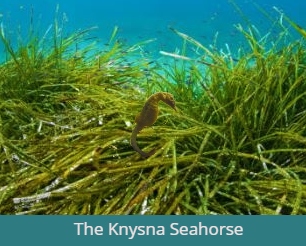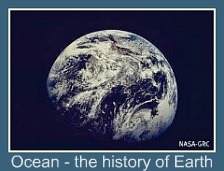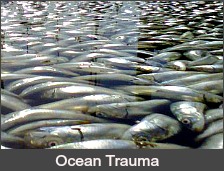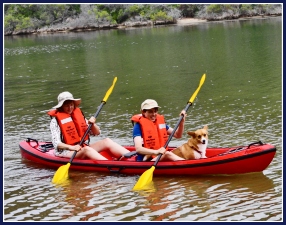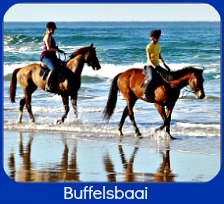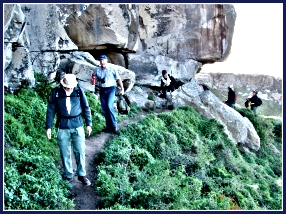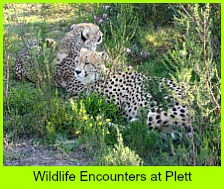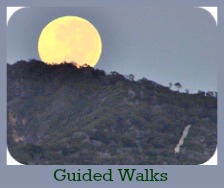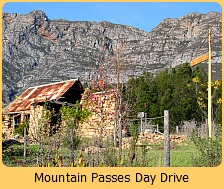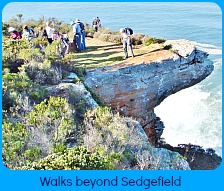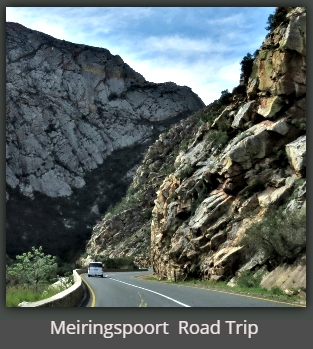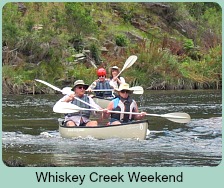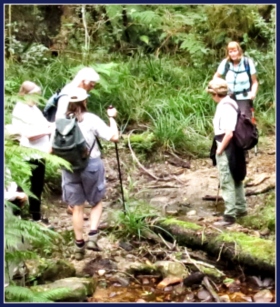Discover the wonder of
Watching Whales
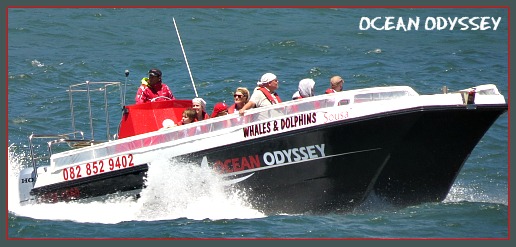
There are as many as 23 different whales in the Indian and Atlantic Oceans off the South African coastline, most of which are seldom seen by us. However, three species are familiar sights which we never tire of!
There are many opportunities to see them along the Garden Route coastline, Witsand, Stilbaai, Mossel Bay, Wilderness, Victoria Bay, Kleinkrans, Sedgefield, Knysna and Plettenberg Bay – in fact virtually anywhere that you can get a viewpoint down on the ocean.
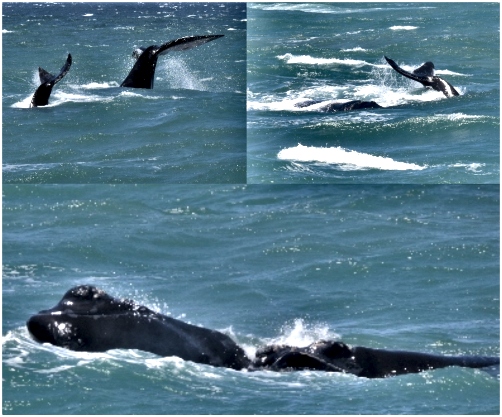 Southern Right Whales -Mother and Calf in Victoria Bay
Southern Right Whales -Mother and Calf in Victoria BayWe have seen whales while hiking the Cape Clawless Otter Trail on the coastal dunes in the Goukamma Nature Reserve.There were 2 of them, far out but their blowing and breaching were easy to see and we had binoculars to help us confirm it. Even at a distance the sight was impressive.
It was exhilarating to see another 3 close up at Victoria Bay where we were able to watch them for over an hour - two adults and a calf, one adult was most likely to be the mother of the juvenile, the other could have been a male as there was a lot of activity in the water.
At Plettenberg Bay, two tour operators, Ocean Safaris and Ocean Blue Adventures enable you to experience the adrenalin rush of getting up close and personal with the giants of the oceans!
As you watch their huge bulks glide smoothly and elegantly through their watery domain you cannot help but be in awe. The mere size of them makes you feel extremely vulnerable. They are in their home territory and you seem far from yours!
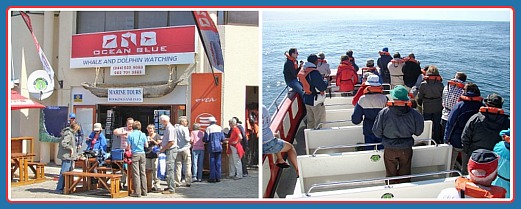
If you happen to be close by when this great beast breaches or lobtails (slaps the surface of the water with its tail), you realise instantly, that its size alone, in comparison to all other creatures, renders it an inordinately powerful animal.
Below is a photo of a breaching Southern Right mere seconds before it crashed down on to the sailing boat. This photo was taken in Table Bay, outside Cape Town by a tourist on another boat close to this one.

A scientist at Cape Town Mammal Research Institute at the University of Pretoria, suggested that the animal had probably been unaware of the proximity of the boat which was under sail and making little noise. At that time it was becalmed as the wind had dropped. Whales don’t have particularly good eyesight and are more sensitive to sound.
Fortunately although the some skin and blubber was left on the boat’s deck and the mast was broken, the mammal swam off, hopefully little more than bruised. The steel boat had a motor and was able to limp back to port, relatively unscathed. This is virtually a freak accident but it is a warning to keep the required distance from these gigantic creatures.
In truth you need permits to get in close to these ocean behemoths anyway. Some tour boats have permission to get to a 50meter range but normally the acceptable range is 300meters as harassing these mammals is strictly forbidden.
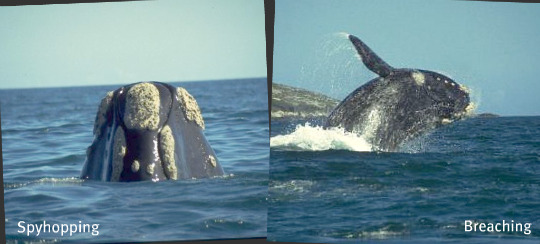
Sea kayaks often get close to them because the gentle giants inadvertently get close to kayaks! Kayakers can find themselves accompanied by whales out of curiosity or just perhaps, it is a subliminal bonding encounter chosen by the mammal.
There could be a readiness to interact with humans as dolphins often do and perhaps whales can feel as deeply as we do when we get close to them.
This is not so obvious when one is in a crowd and there is an excited buzz and noise going on as a whale is seen, but if you are alone (as in a kayak) or with a small sensitive group and you allow yourself to be quiet and perceptive and focus on the animal, you will quite possibly experience a profound connection with this incredible sentient being.
In 2002 on a holiday to New Zealand, my husband and I had booked a cruise to “swim with dolphins”. We came across a number of pods but rules prohibited us from entering the water – 1. if they were hunting for food 2. if they had calves less than half the size of the adult. This applied. Nonetheless we got closer than expected at one stage, by being allowed to take turns in leaning over the bow (a few of us at a time) and singing. The dolphins showed their appreciation by swimming up close in the slipstream and looking up at us – they took it in turns too and stayed with us for as long as we “hung out” with them. It was an exhilarating joyful experience not least because it was purely of their choosing to interact with us!
Southern Rights
Southern Rights can be seen from June to November when they leave the summer polar waters of Antarctica to calf and breed in the warmer Indian Ocean along South Africa’s coastline. From Saldanha to Kwazulu–Natal, this is a distance of over 2000 kms.
Adults are 11 - 18 metres long and can weigh between 25 and 66 tons. They are called “right” because they were considered right for hunting and floated once harpooned so were easy to retrieve.
They were hunted to the brink of extinction (90% of the species was slaughtered) by the late 1800's with 10 whaling stations operating off the South African coast alone. Their northern counterparts suffered the same fate. All the countries in both hemispheres in whose waters they breed, now protect them but their recovery has been slow and they are still considered endangered.
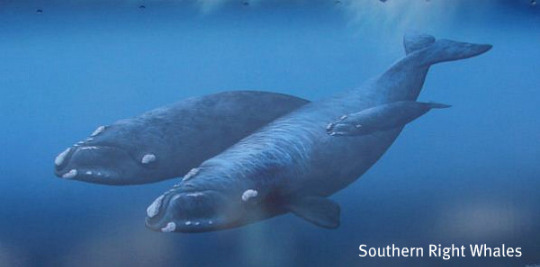
They come in close to shore in many places along our coast and are easily observed from cliffs and vantage points. The Southern Right is readily distinguished from other whales by the callosities (calluses) on its head, a broad back without a dorsal fin and a long arching mouth that begins above the eye.
Its skin is very dark grey or black, occasionally with some white patches on the belly. The callosities appear white due to large colonies of cyamids (whale lice). The lice mainly eat algae that settle on the host's body but they also feed off flaking skin and wounded or open areas around the head. They cause insignificant skin damage The callosities form features unique to every individual which makes it an extremely useful tool for photo-identification.
Wild and Wacky Songs
Whales communicate with each other by infrasonic sounds over vast distances. Male Humpbacks however, have been discovered to sing songs. They can last from a few minutes to half an hour. Research has shown they only sing complete songs at their breeding grounds, i.e. they string sounds together in a pattern that is repeated several times. It’s a mystery how they do this because they do not have vocal chords but they seem to somehow use their respiratory system, their nasal cavity in particular.
A study lasting over 30 years by acoustic biologist, Katy Payne found that an individual’s songs change/evolve over time too, as he creates new patterns but that each one sings his own unique song and can be identified by it. The song’s purpose is speculated to attract females or even to call other males to contests to earn the right to breed with a female. These whale songs can be heard more than 160kms away.
Humpbacks
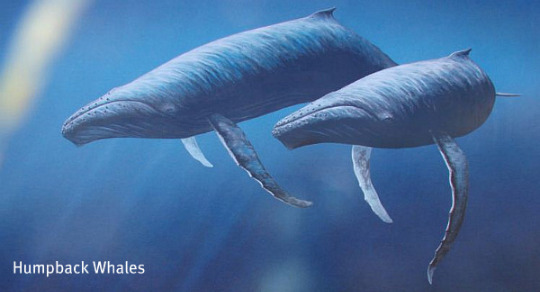
Humpbacks are given their name because of their habit of cresting out of the water before bending their backs in preparation to dive thereby accentuating the hump in front of the dorsal fin. They have 2 blowholes. They move in temporary small loose groups with only the mother and her calf having lasting bonds.
They are energetic and acrobatic and can be seen blowing, breaching, lobtailing and spyhopping which is most entertaining. Their flippers are extraordinarily long and look more like paddles than flippers. The varying colour (all black to all white of the ventral (underside) fluke enables scientists to identify individuals.
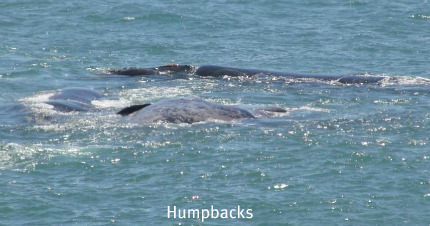
The Humpbacks’ population was also decimated by whaling and today, is a fraction of its original size. Adults are around 16m in length and weigh 25-40 tons.
They spend their year close to continental shores and islands, breeding and feeding on shallow banks. They appear along our shoreline from May to early December.
Brydes
There is a small resident population of Brydes Whales in the vicinity of Plettenberg Bay so you’re virtually guaranteed an opportunity of seeing them there.
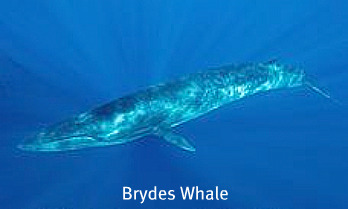
Of the 300 000 Bryde’s that once roamed the oceans less than 3% remain. They were named after Johan Bryde, a whaler who constructed the first whaling station in South Africa more than a century ago.
Adults are 11.5-14m in length and 12-20 tons in weight. They often give the impression of large dolphins. They swim in small groups of between 1-7 and can increase to 30 at feeding grounds. Brydes eat krill, squid and fish including sardines and anchovies.
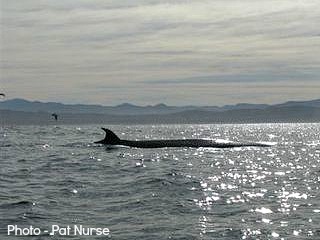
They traverse the whole length of South Africa’s coastline but are generally not often seen so when you're visiting the Garden Route you have the best chance seeing them by taking a whale watching boat from Plett.
Brydes Whales generally swim in deeper waters further from shore and we had the thrill of seeing one at close range about 14 kms out to sea when we took a Pelagic Bird trip from Knysna.
Interesting Tidbits about Whales
These three are baleen whales which means that instead of teeth, they have baleen plates along their upper jaw which look like long furry combs made of an elastic fibrous protein, keratin. Sometimes referred to as whalebone, these sieves filter out the great mouths full of water they take in, keeping the krill (small shrimplike crustaceans) and small schooling fish which they then swallow.
Cetaceans can’t breathe under water, they come to the surface to breathe through their blowholes on the top of their heads expelling a spout of water vapour and air as they do so. There’s a muscular flap over their blowhole that forms a tight seal when they’re underwater.
Breathing is a voluntary action in Cetaceans so they sleep by catnapping. They rest on the surface of the water for a few moments whilst they’re swimming and each side of the brain takes it in turns to 'switch off' while the other half stays awake.

To see and appreciate all these gentle giants of the ocean, it is well worth joining a safari group on board an appropriate whale-watching vessel. Your knowledgeable guides will provide great information and insight into all the marine life that you'll see - whales, dolphins, seals, penguins and birds. And....you'll be rewarded with magnificent photographic opportunities with which to recall your encounters.

Links to other Whale Watching Sites


HERMANUS is rich in breathtaking scenery with its unparalleled scenic beauty, modern infrastructure, upmarket shops and endless adventure options. It is no wonder that it is transformed into a bustling hub of activity almost all year round.

Whale watching off Los Gigantes, Tenerife is a hands on experience which exposes the mysteries of the ocean and beauty of our world.



